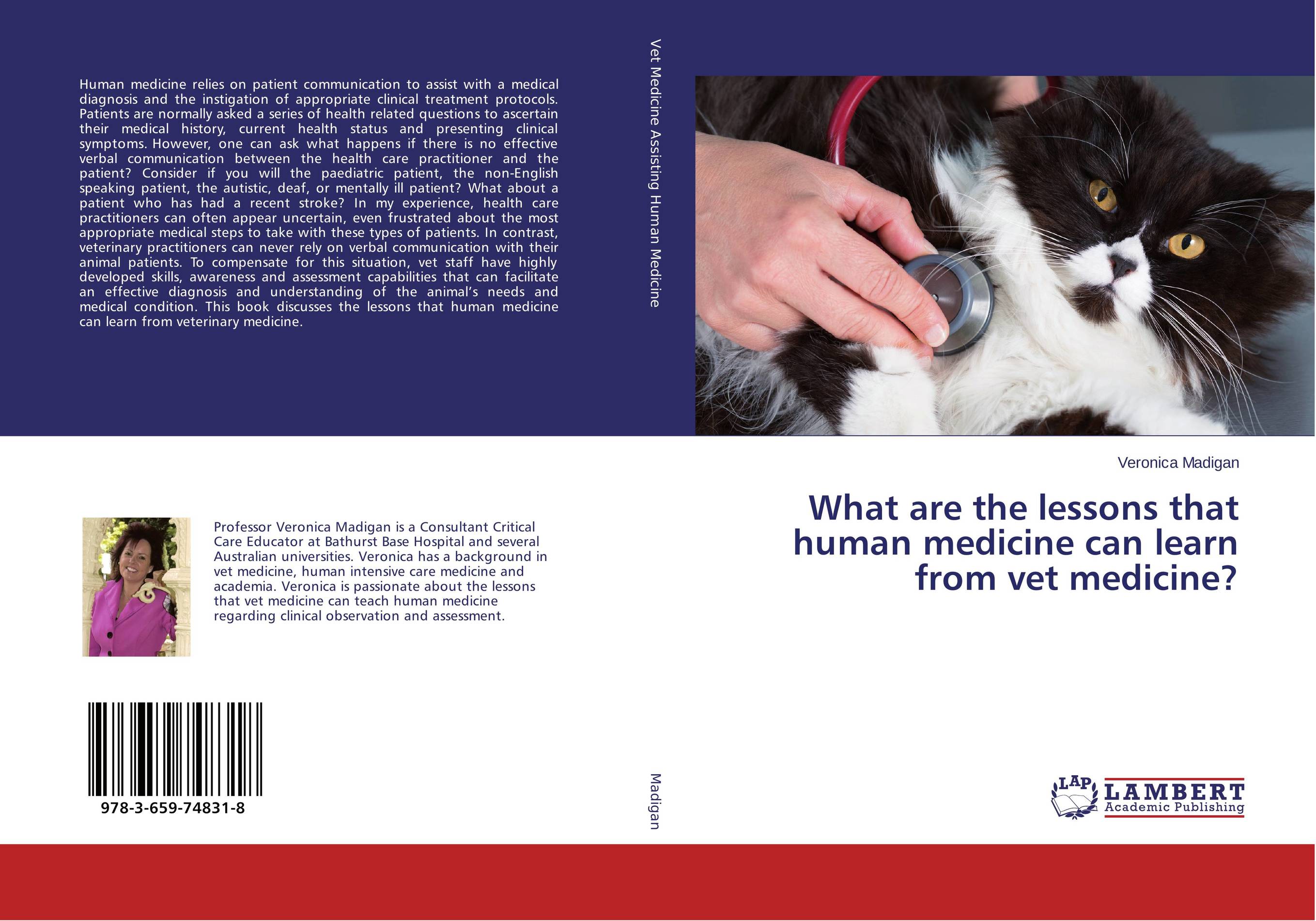| Поиск по каталогу |
|
(строгое соответствие)
|
- Профессиональная
- Научно-популярная
- Художественная
- Публицистика
- Детская
- Искусство
- Хобби, семья, дом
- Спорт
- Путеводители
- Блокноты, тетради, открытки
What are the lessons that human medicine can learn from vet medicine?.

В наличии
| Местонахождение: Алматы | Состояние экземпляра: новый |

Бумажная
версия
версия
Автор: Veronica Madigan
ISBN: 9783659748318
Год издания: 2015
Формат книги: 60×90/16 (145×215 мм)
Количество страниц: 312
Издательство: LAP LAMBERT Academic Publishing
Цена: 37968 тг
Положить в корзину
| Способы доставки в город Алматы * комплектация (срок до отгрузки) не более 2 рабочих дней |
| Самовывоз из города Алматы (пункты самовывоза партнёра CDEK) |
| Курьерская доставка CDEK из города Москва |
| Доставка Почтой России из города Москва |
Аннотация: Human medicine relies on patient communication to assist with a medical diagnosis and the instigation of appropriate clinical treatment protocols. Patients are normally asked a series of health related questions to ascertain their medical history, current health status and presenting clinical symptoms. However, one can ask what happens if there is no effective verbal communication between the health care practitioner and the patient? Consider if you will the paediatric patient, the non-English speaking patient, the autistic, deaf, or mentally ill patient? What about a patient who has had a recent stroke? In my experience, health care practitioners can often appear uncertain, even frustrated about the most appropriate medical steps to take with these types of patients. In contrast, veterinary practitioners can never rely on verbal communication with their animal patients. To compensate for this situation, vet staff have highly developed skills, awareness and assessment capabilities that can facilitate an effective diagnosis and understanding of the animal’s needs and medical condition. This book discusses the lessons that human medicine can learn from veterinary medicine.
Ключевые слова: non-verbal clinical observation, non-verbal patient assessment, verbal and non-verbal clinical clues, clinical body language



